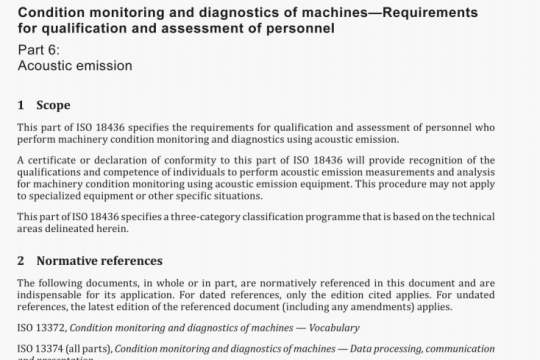ISO 2597-2:2015 pdf free
ISO 2597-2:2015 pdf free.Iron ores – Determination of total iron content
Add 20 ml of hydrochloric acid (4.1) and 10 to 20 drops tin(I) chloride solution (4.14), cover the beaker with a watch glass, heat the solution gently at about 80 °C for 1 h and continue heating without boiling at a higher temperature for about 10 min to decompose the portion
Normally, the test portion is completely decomposed after 50 min. In case of difficulty in decomposing the test portion, add some new drops of tin(II) chloride solution (4.14) and keep the test portion in a hotplate. The total decomposition time cannot exceed 90 min.
NOTE Avoid boiling to prevent volatilization loss of iron(II) chloride.
Remove the beaker from the source of heat, wash the watch glass in a jet of water, and dilute to 50 ml with warm water. Filter the insoluble residue on a filter paper. Scrub the remainder of the residue on the beaker wall by using a policeman, and transfer the remainder on to the filter paper with a small volume of warm hydrochloric acid (4.4). Wash the residue with warm hydrochloric acid (4.4) until the yellow colour of iron(1I) chloride is no longer observed, and then wash in warm water six to eight times.
Collect the filtrate and washings in a 500 ml or 600 ml beaker. Evaporate this main solution without boiling to about 70 ml (see NOTE above).
Place the filter paper and residue in a platinum crucible (5.4), dry then char the paper and finally ignite :at 750 °C to 800 °C for 1 h. Allow the crucible to cool, moisten the residue with several drops of sulfuric acid (4.7), add about 5 ml of hydrofluoric acid (4.5), and heat gently to remove silica and sulfuric acid (until white fumes are no longer observed).
After cooling, add 3 g of potassium disulfate (4.20) to the crucible, cover the crucible with a lid, heat gently at first then strongly (dull red) until a clear melt is obtained. Cool, place the crucible and lid in a 250 ml or 300 ml beaker, add about 30 ml of warm water and 5 ml of hydrochloric acid (4.1) and warm to dissolve the melt. Remove the crucible and lid, wash with a small volume of warm water. Combine this solution with the main solution.
Add 5 drops of potassium permanganate solution (4.17), heat the solution to just below the boiling point and maintain at this temperature for 5 min to oxidize any arsenic and organic matter. Evaporate without boiling to about 70 ml, and follow the procedure specified in 7.5.2 (see NOTE above).ISO 2597-2 pdf download.




